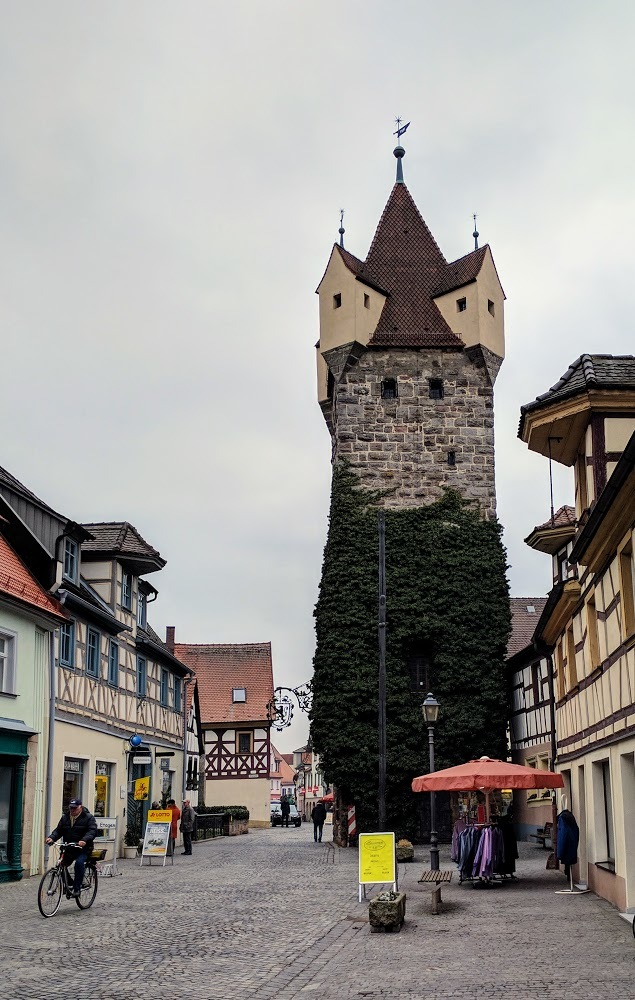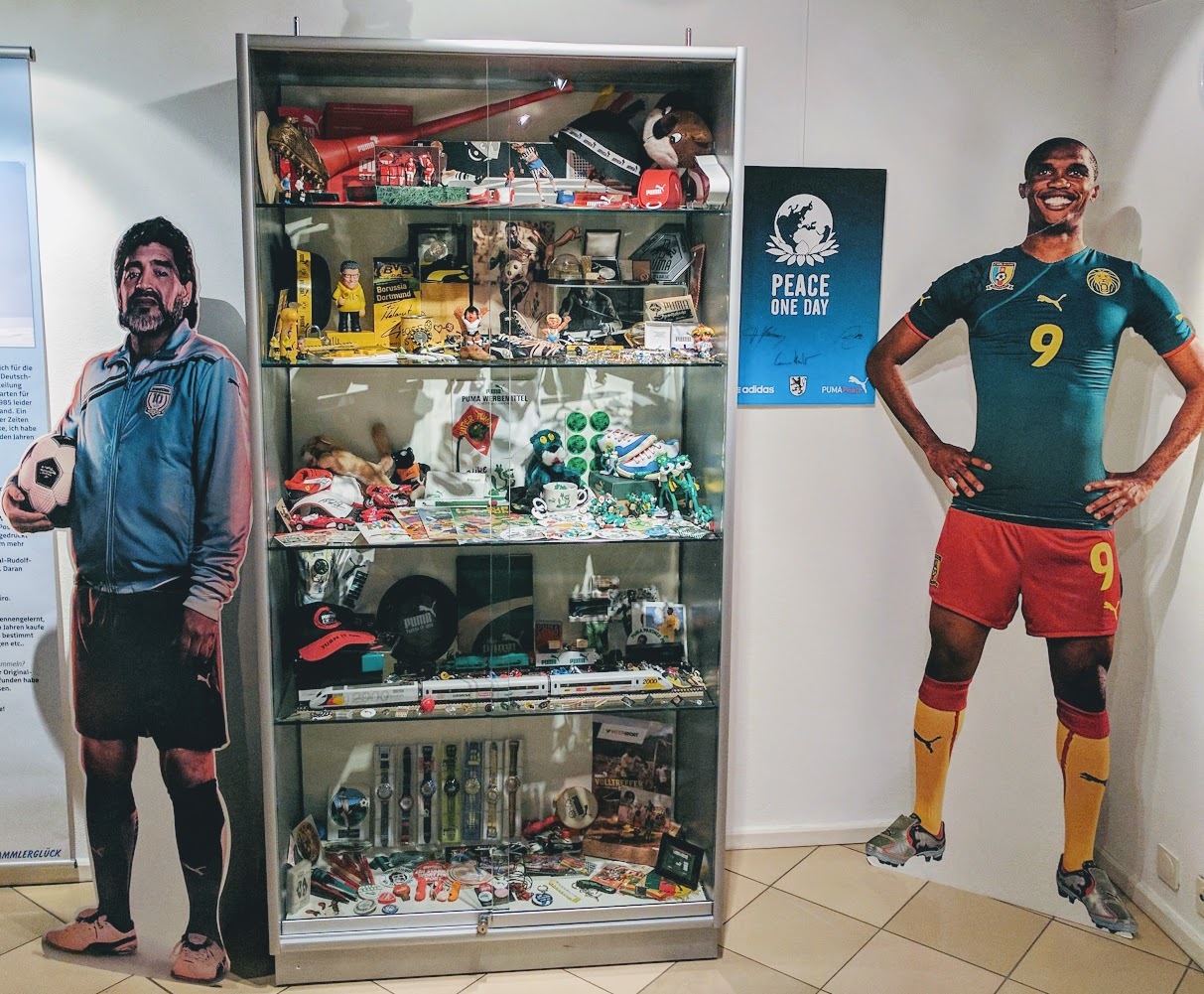The cab driver wanted to make sure I hadn’t misspoken. “Adidas?” he asked, in a voice that said, Are you sure? The implied alternative being Puma, the other international sportswear company headquartered in the Bavarian village of Herzogenaurach, population about 24,000.
Herzo, as the locals call it, is a place of legend in the sports world. It’s where the Dassler brothers, Adi and Rudolf, started a shoe business in the early 1920s—until their relationship disintegrated, they divided their company in two, and moved to opposite sides of the river that flows through the middle of town. From then on, the two branches of Dasslers were Germany’s answer to the Hatfields and the McCoys, only their family feud played out at the Olympics, on basketball courts, on soccer fields, and, of course, on the cobblestone streets of their little village.
Videos by VICE
It’s said that at the height of the rivalry, Puma and Adidas were like rival gangs. If you worked at one, you didn’t dare cross the river. Each side had its own bakery, its own bars, its own sports clubs.
It was Sharks versus Jets, in Lederhosen.
Read More: Welcome to Munich, the Mecca of River Surfing
Before the feud, however, there was the partnership, and at first it was a smooth one. It was forged in the aftermath of World War I, when the Allies imposed harsh economic penalties on Germany, and the country plunged into depression, with widespread unemployment and runaway inflation. The Dassler brothers returned from fighting the war to see even their mother’s laundry business sit empty. But it was there, in that empty laundry, that Adi Dassler began making shoes.
Times were tough, and Adi’s materials sometimes included whatever he could find in the countryside, but even if people don’t want to pay for clean clothes, they still need shoes. And after three years, his company had grown to the point that he brought on his brother Rudolf to help with the business end of the operation. They called their firm Gebruder Dassler—Dassler Brothers.
Adi, the tinkerer, made all kinds of shoes early on, but his breakthrough came when he designed an early running spike. The shoes looked a bit like ballet slipper with nails hammered through the foresole, but they were innovative, providing extra traction where previously athletes had little. Before long, the brothers were supplying the German track and field team, among other athletes. As the 1930s continued, their business expanded beyond the country’s borders. At the 1936 Olympics in Berlin, American track star Jesse Owens wore a pair of Dassler spikes as Adolf Hitler watched in the stands.

Herzo. Photo by Brian Blickenstaff
Although neither brother was a particularly staunch Nazi, like many Germans they were party members. Hitler’s emphasis on physical education and athleticism greatly benefited their company. But while business was good, the domestic situation at house Dassler was not.
For one thing, the brothers and their wives all lived together. Never a good idea.
“The relation to my brother was ideal from 1924 till 1933,” wrote Rudolf Dassler as an older man, as quoted by Barbara Smit in her excellent book, Sneaker Wars: The Enemy Brothers Who Founded Adidas and Puma and the Family Feud That Forever Changed the Business of Sports. “Then his young wife tried to interfere in business matters, although she, with her 16 years, had no experience at all, and the warfare began.”
By “warfare,” Rudolf was not talking about World War II, although that also played a role. As tensions increased at home, Rudolf was called to join the war effort; Adi stayed behind to run the factory. Rudolf, increasingly convinced that his brother was plotting to oust him while he was away fighting, repeatedly went AWOL in an attempt to get back home to the factory.
After the war, during the period of American-led “denazification,” paranoia on both sides of the family had increased to the point where the brothers and their wives performed a kind of morbid one-upmanship, each trying to make the other seem like a bigger Nazi than he actually was. Although Rudolf spent time in jail immediately following the U.S. occupation, the Americans ultimately decided the brothers were small fish and declined to punish either.
Gebruder Dassler split in 1948, and the initial separation happened fairly naturally. Adi kept the manufacturing department and went on to form Adidas. Rudolf took the business side of the operation across the river, where he set up a company called Ruda, which eventually became the more elegant “Puma.” Employees picked sides themselves. The brothers’ mom went with Rudolf.
“Naturally, the workers went shopping on their side and lived on their side,” Dr. Manfried Welker, a local historian and relative of the Dasslers, told me. (Welker’s grandmother was the older sister of the Dassler brothers.) We were standing in the city museum, in front of a temporary exhibit of Puma memorabilia collected by an employee during a decades-long career: toy cars, lighters, a photo of Pele in his Puma Kings.
“It wasn’t a bloody war or anything,” Welker continued. The two sides just kept to themselves.
The brothers themselves didn’t speak to each other for years. It’s often written that they never talked again, but according to Smit they met a handful of times late in life, at the Frankfurt airport and at a hotel in nearby Nurnberg. How much reconciliation took place is hard to say. When Rudolf was on his deathbed in 1974, his brother was invited to talk to him one last time. Adi declined.

A Puma exhibit at the city museum. Photo by Brian Blickenstaff
Today, when you walk through town, as I did one bitterly cold morning this past February, you wouldn’t know it had once been segregated. You might not even know the town had anything to do with sports at all, except for the bronze statue in the town square, which features two young boys cobbling together some shoes with an older man.
According to Welker, the city changed when the two families sold the companies in 1989. The companies have since globalized, offshoring much of the manufacturing. “If you go to the parking lot of Adidas and look at the license plates, there are French plates there, Dutch plates,” Welker told me. “The workers aren’t in town anymore.” Most live in Nurnberg.
Back in the taxi, I told the driver that, indeed, I meant Adidas, not Puma. He pointed the car away from Herzo, and we drove out of town for a few miles. Eventually we came to a large campus Adidas calls its “world of sport,” but not before passing Puma’s global headquarters.
The two companies were once divided by a river, and represented by rival groups, their interests fracturing a small town. Today, shareholders have no time for that sort of thing. It’s all about the bottom line, which is evident in the location of the two company headquarters. No longer in the center of town, they were built over the last couple of decades on cheaper land on the periphery. And Welker was right. Their parking lots show plates from across the European Union.
Want to read more stories like this from VICE Sports? Subscribe to our daily newsletter.

